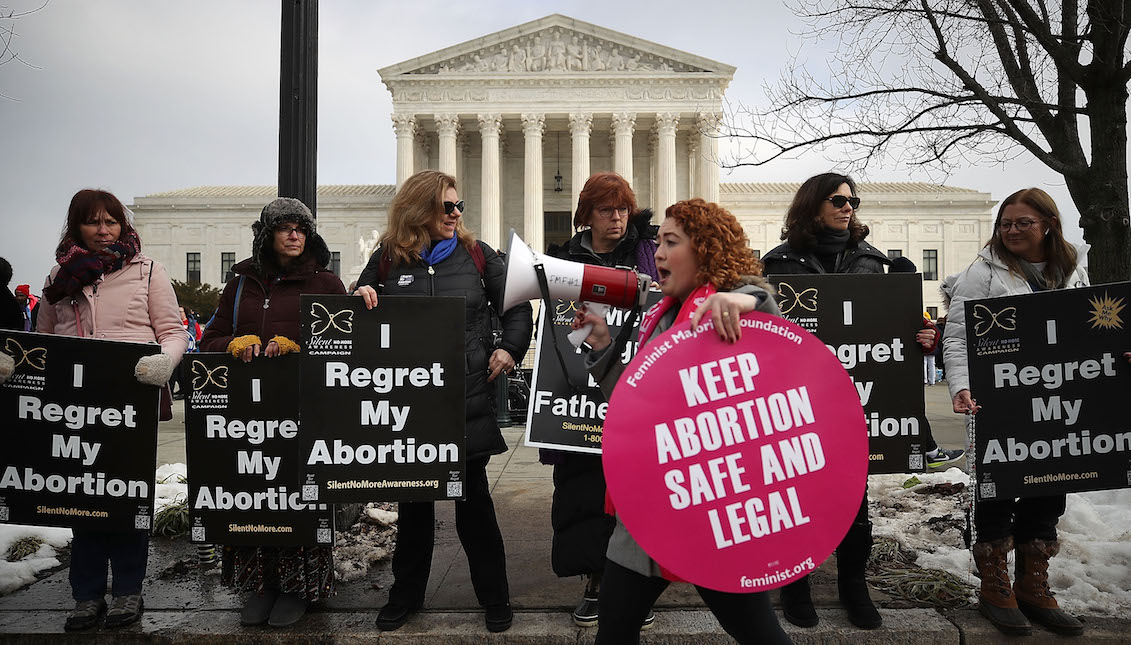
Flash Back America: It’s suddenly 1973 again and Roe vs. Wade is back on the table
The Heartbeat Bills trying to find their way up into the Supreme Court: Why legal abortion in Roe vs. Wade became mainstream again.
Women are now facing new abortion restrictions in many states. Some argue that these restrictions are part of a new way to boycott women’s reproductive rights, and some others firmly believe life should be given every possible chance. It is now up to the law to determine the path to follow.
Here are some facts:
68% of voters who are familiar with the ruling, agree with letting Roe vs. Wade stand, according to a February 2019 survey by Fox News. This seems to show that people are leaning towards an understanding of abortion in terms of it being a personal body choice.
Nearly 1 out of 4 women, between 15 to 44 years old, are projected to have an abortion by the time they turn 45, as found in a Guttmacher analysis published in the American Journal of Public Health in 2017, making abortion a common procedure.
At least, 1 in 6 pregnancy-related deaths was due to illegal abortions before Roe vs. Wade made the procedure legal and safe for every woman in the US. Now abortions are performed with a safety record of 99%, meaning women’s health is safer now.
It means that abortions should be considered from every perspective available, taking into consideration every outcome and every consequence, either good or bad, for the people involved. According to the existent law, abortions are currently part of a woman’s rights to make decisions over her body and her sexual life, and it has been so for the past 46 years.
In a round of newspaper headlines, 16+ states are in the middle of introducing - have introduced, passed or are fighting to pass, among others - the “Heartbeat Bill,” which is the strictest ban to date on abortion.
This legislation criminalizes abortion after six weeks of pregnancy when it claims the moment where the fetus heartbeat is usually detectable, but gynecologists and neonatal experts state that what lawmakers are calling a “heartbeat” is not but a simple pulsing of tissues in development, not cardiac activity.
Despite scientific statements, pro-life lawmakers argue that what they believe to be a heartbeat is a much better limit for recognizing life exists, instead of a fetus being able to live on its own outside the womb, without the mother, as existing law dictates.
Challenging what has been the constitutional law in the United States for the past four decades, it seems as if the goal is aiming at securing a spot in the U.S. Supreme Court, a body that is now weighing heavier on the pro-life side with the latest judge addition of Brett Kavanaugh.
The goal perhaps? Overturning Roe vs. Wade, making abortion illegal at every stage across the nation, and claiming collective victory in the U.S. for pro-life advocates around the world. Something they have been after ever since Roe vs. Wade’s ruling took place.
RELATED CONTENT
Georgia is the last state out of 3 who have signed the bill into existence in 2019, along with Ohio and Mississippi. Other states have passed the legislation, but have encountered court blockages so far.
Alabama was expected to meet this past Thursday to discuss amendments to the bill, with its version being one of the toughest in the batch. They intend to ban abortion entirely, not even exempting rape or incest circumstances, only ones where the mother’s health could be seriously at risk.
When it comes to punishments, some versions of the bill include up to 99 years in prison for felony charges to doctors performing an abortion in most circumstances. And even the risk of a 10-year prison term for simply attempting an abortion, according to a report by The New York Times.
Leana Wen, president of the Planned Parenthood Action Fund, said that many of the bills being introduced contain provisions that are far-outreaching, taking the issue to a whole new level.
Such provisions entail authorities to investigate women who miscarry, in what some people believe is nothing but forcing women to go through emotional pain, making abortion something despicable, as if miscarrying is not terrible enough.
Capital punishment also made the list, enforced for those receiving or performing an abortion. Making women criminals for such a complex, difficult, distressing procedure seems like a bit too over the top.
For pro-choice women, the fight continues, demanding respect for their bodies and their choices, supporting Roe vs. Wade all the way through to the Supreme Court is necessary, and protesting to block the Heartbeat Bill wherever it is passed.
For pro-life advocates, the fight is also for the bill to make it all the way through to the Supreme Court, crossing their fingers for what they feel is their best bet to finally overturn Roe vs. Wade and make abortion illegal once and for all.










LEAVE A COMMENT: